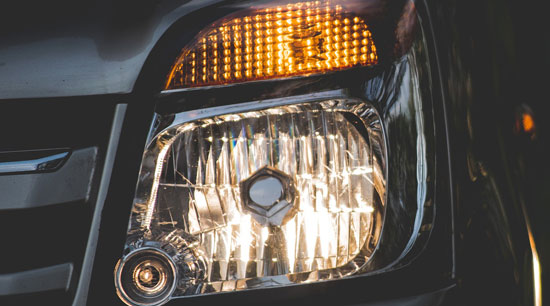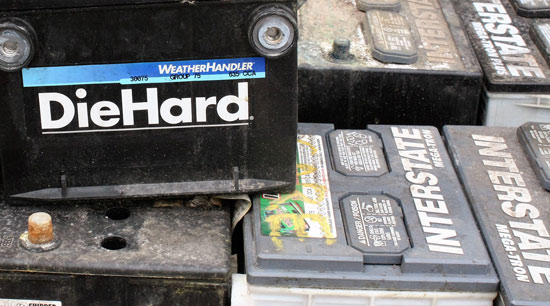What will you do when you turn the key, and your car won’t start? This is one of the worst sensations especially when there’s no apparent reason.

When your car loses power and won’t crank, there can be several reasons. The battery is the usual culprit, but there may be an underlying issue. Without finding the reason, you may find yourself stranded or at the mercy of waiting for roadside assistance.
autobahn-performance.com helps you uncover the reasons a car battery can die, how to solve the problem before being stranded, and who to call when there is no one around to help.
My Car Won’t Start and Battery Needs to be Jumped
When you turn the ignition key, the expectation is for the vehicle to roar to life and all of your internal electronics to turn on. When that doesn’t happen, it can be infuriating and require a jump to get your car going again.

When using jumper cables, the following will help you avoid electrical damage and personal injury:
• Check your vehicle owner’s manual for any special instructions or precautions before attempting to jump your or another battery.
• Align the vehicles so that the jumper cables easily reach between the two batteries.
• Inspect both batteries. If either is cracked or leaking battery fluid (sulfuric acid), DO NOT proceed! There is a serious risk of fire or explosion with a defective or damaged battery.
• Extend and inspect the cables for worn spots, frayed wires, and loose clamps (avoid using the cables if they are in poor condition)
• The jumper cable clamps are universally designated “red” for positive or a (+) sign and “black” for negative or a (-) sign. The battery posts will also be clearly identified in red or (+) and black or (-).
• With both vehicles off, attach a positive clamp to the positive post of the dead battery.
• Attach the other positive clamp to the positive post of the good battery.
• Attach the negative clamp to the negative post of the good battery.
• Attach the other negative clamp to unpainted metal on the dead battery’s vehicle, such as the frame, a bolt, or the engine block.
• Start the vehicle with the good battery and allow it to idle for 2 to 3 minutes.
• Start the vehicle with the dead battery.
• Remove the jumper cables in the reverse order they were attached: negative from the frame, negative from the good battery, positive from the good battery, and lastly, remove the positive clamp from the battery that was charged.
Car Battery Problems and Solutions
The following are scenarios in which a car battery has lost or will not hold a charge:
Scenario 1 – You left a light on in the car or forgot to turn off the headlights and running lights.
This is the most straightforward scenario to fix and the easiest to avoid. After getting a jump for the battery, operate the vehicle for a minimum of 20 to 30 minutes to reenergize the battery.

Solution: Before exiting the vehicle, turn of headlights, running lights, electronic accessories, or anything requiring a power source.
Scenario 2 – The battery is faulty, old, damaged, or can no longer hold a charge.
After getting a jump, operating the vehicle, and stopping, the battery dies again or has difficulty turning the engine over (When the car is in operation, the headlights and internal console lights will burn steadily).

Solution: Replace or have the battery replaced. Make sure the replacement battery is the appropriate size (BCI) and strength (CCA) for your vehicle make and model.
The two numbers associated with your battery are as follows:
BCI – Battery Council International or BCI group number. These numbers identify the physical dimensions of the battery. If the new battery is the wrong size, it will not fit properly in the battery tray or not be secured by the hold-down clamp or strap.
CCA – Cold Cranking Amps. This defines a battery’s ability to start an engine in cold temperatures. The higher the CCA, the greater the starting power of the battery.
Old Battery Disposal – Part of the cost of a new battery is a refundable core charge. Since car batteries contain toxic materials such as lead and sulfuric acid, it is encouraged to give the old battery to the vendor that sold you the new one for a core charge refund and proper disposal of the battery.

Scenario 3 – The vehicles alternator is no longer functioning, and the battery repeatedly dies.
After getting a jump, turn on the internal console lights and/or the headlights. If the lights brighten and dim as the motor revs up or slows down, it is indeed the alternator that is no longer sending power to the battery and electronic components of the vehicle.

Solution: Replace or have the alternator replaced by a trusted mechanic, then have the battery checked after replacing the alternator to ensure that it was not damaged while in use without a functioning alternator.
Some other potential reasons your vehicle may be failing to start may include:
• Fuel line interruption
• Out of gas
• Bad starter
• Failed starter solenoid
• Bad alternator diode
• Bad ignition switch
• Faulty wiring
Except for being out of gas, the above mechanical or electrical malfunctions should be addressed by a trusted mechanic.
Roadside Assistance When Your Car Won’t Start
If you find yourself in a situation where your car won’t start, and no one is around to help you or offer a jump to get you going again, roadside assistance is a mobile mechanic service that comes to your location to help fix most common mechanical issues, including the battery and electrical system.

Roadside assistance is offered by most car insurance policies and is a component of most service packages when purchasing a new vehicle from a dealership (time and mileage limitations may apply).
Many states also offer roadside assistance programs. The State of Georgia, for example, provides services through programs such as Coordinated Highway Assistance & Maintenance Program (CHAMP) and Highway Emergency Response Operators (HEROs), both of which can be reached by dialing 5-1-1 from any mobile device. Visit dot.ga.gov/DS/Travel/HEROs for more information.
Why Won’t My Car Start
A dead battery can leave you in the awkward position of relying on a Good Samaritan or having to wait for roadside assistance to arrive.
In this article, you discovered several reasons why a car battery may die, how to solve the problem, and who to call when no one is around to give you a jump.
Once you are mobile again, your next stop should be to your trusted mechanic to fix your battery problem. Procrastination for this type of repair may lead to catastrophic electrical failure within the vehicle or leave you stranded in a random location.
Sources:
https://www.tdi.texas.gov/pubs/videoresource/fsjumpbattery.pdf
http://www.dot.ga.gov/DS/Travel/CHAMP
http://automotive.aaa.com/
https://www.geico.com
(770) 409-8288